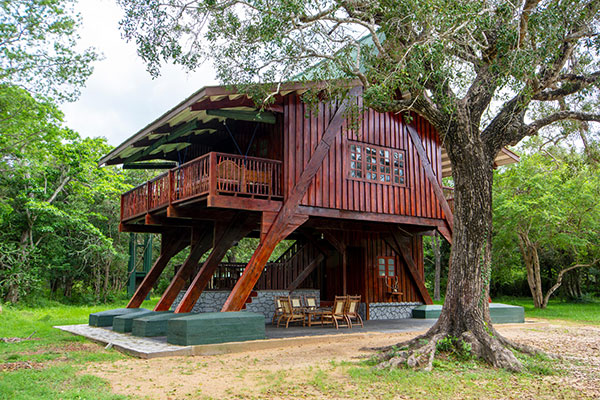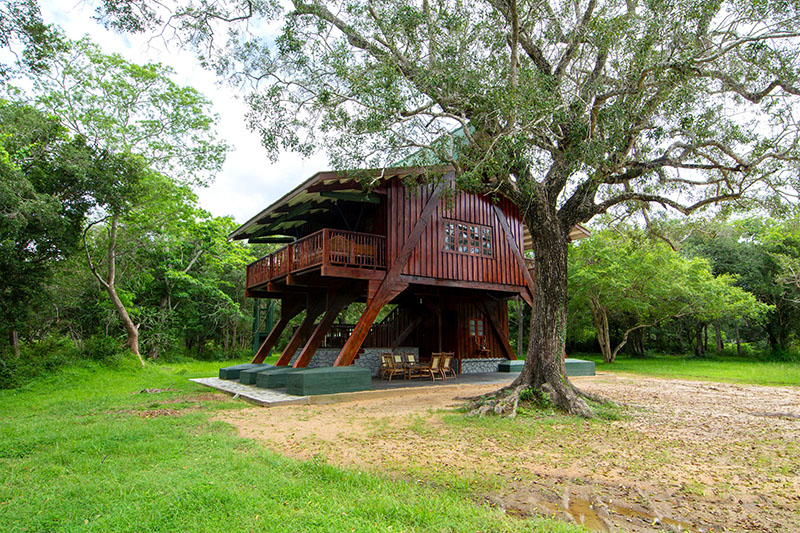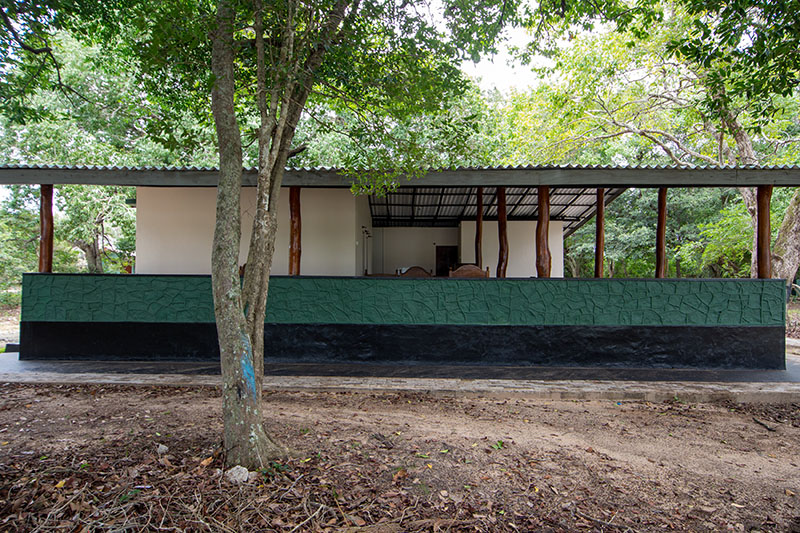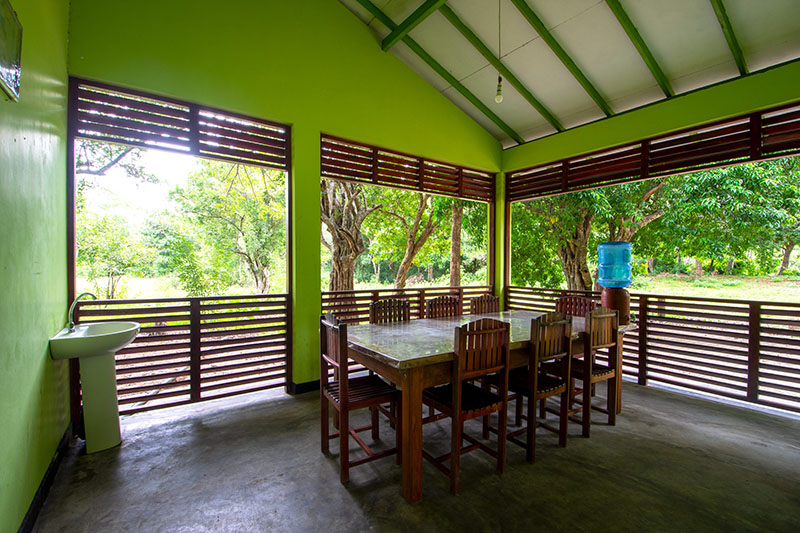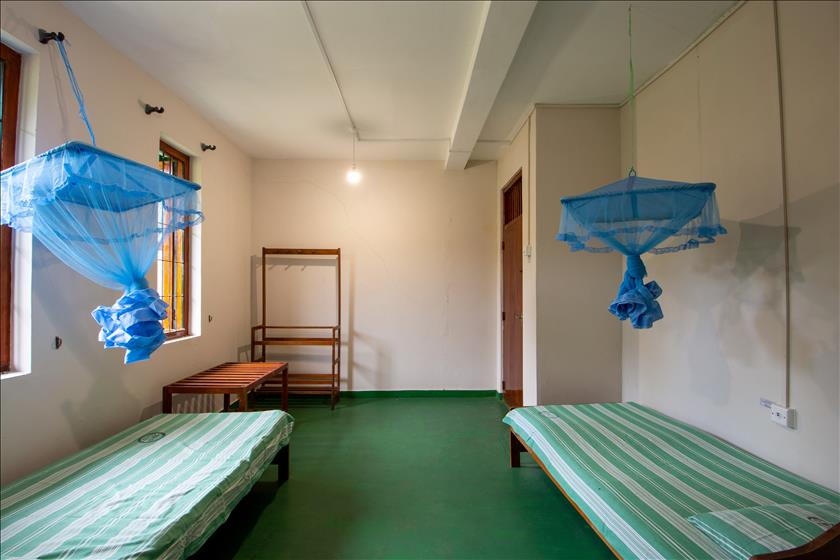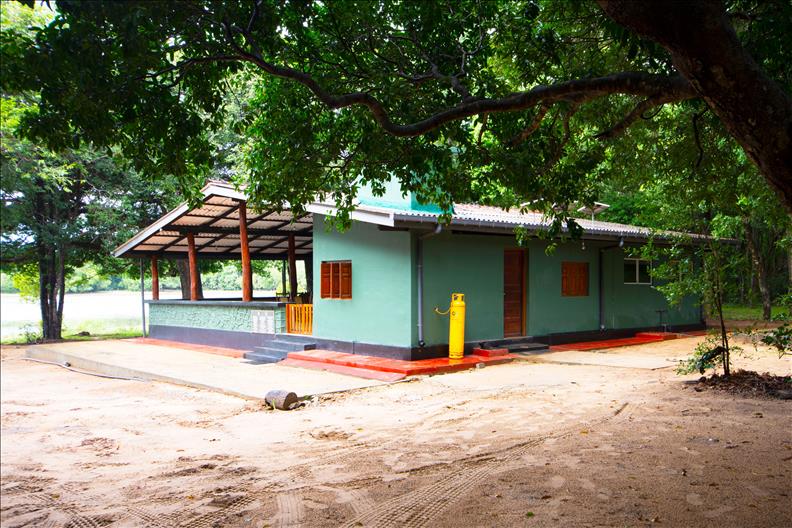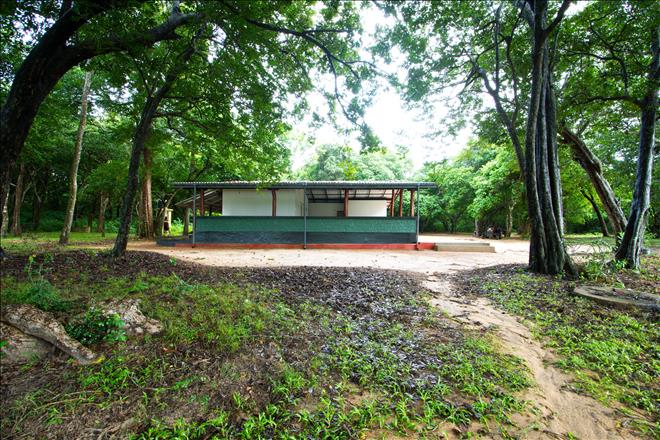

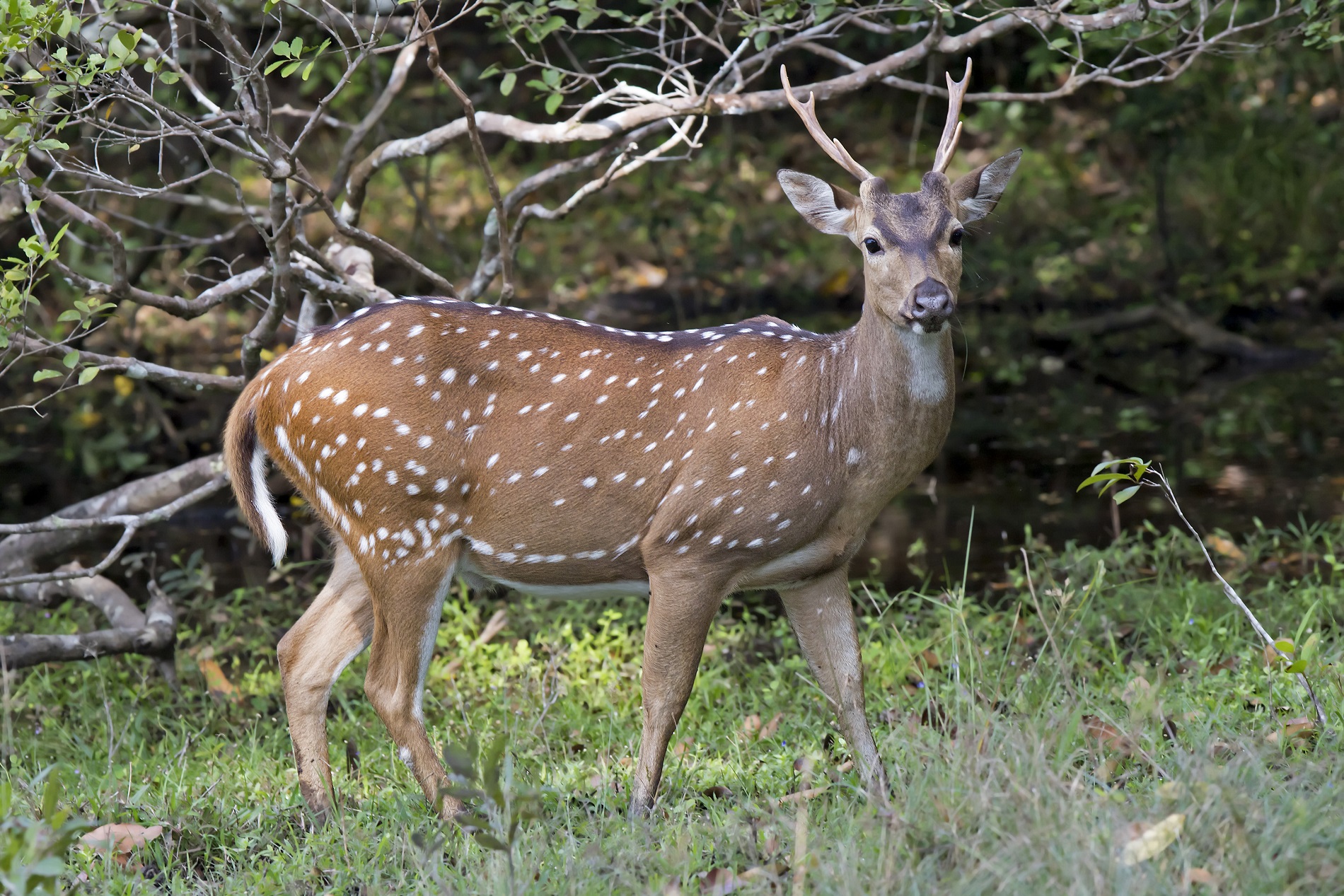

Introduction to
the Wilpattu
Welcome to the lush wilderness of Wilpattu National Park (WNP). Ranging over 131 thousand hectares, it is Sri Lanka’s largest and one of the oldest protected areas. The park consists of five blocks declared between 1938-1973 under the Fauna and Flora Protection Ordinance and is managed by the Department of Wildlife Conservation.
WNP spans across the Puttalam and Anuradhapura districts, and borders the Mannar and Vavuniya Districts. The area is one of the most important elephant habitats in the country and is also a great place to observe the elusive Sri Lankan leopard and the sloth bear.
This park has a denser forest cover unlike many other National Parks in Sri Lanka. WNPs landscape comprises of dry zone forests and thorny scrub interspersed with extensive open plains, sand dunes and the unique Villu wetlands. Bare reddish cliffs rising abruptly from narrow beaches of the Portugal Bay and Dutch Bay are another striking feature of its landscape.
WNP is in the proximity to the ancient historical city of Anuradhapura and houses several ancient ruins and artifacts from various periods of history.

The Entire Wilpattu National Park, marine wetlands in western coast up to 10 km, Kala Oya estuary, Modaragam Aru estuary and Mahawilachchiya fresh water reservoir were declared as a wetland of international importance under the Ramsar Convention in 2013. The area of Ramsar site is 165,800ha, of which WNP is the major component.

Code of Conduct
Code of Conduct for tourists at Wilpattu National Park
While aiming to preserve its rich biodiversity for future generations, the park provides visitor facilities to wildlife enthusiasts to experience nature at its best. Over a hundred thousand visitors came to observe the spectacular wildlife and sceneries of the Wilpattu National Park in 2018. A Code of Conduct had been prepared for educating how the visitors should behave inside the park
- Feeding the wild animals at the park is strictly prohibited.
- Picking up or taking any item or material from the park as a keepsake or souvenir is not permissible as the park is protected by the Fauna and Flora Protection Ordinance. This includes animals, insects, plants, flowers, eggs, bones, skulls, rocks etc.
- Observe in strict silence at wildlife sightings to avoid distressing animals.
- Avoid using the flash when capturing photographs of the wildlife.
- Refrain from loud music or notifications from mobile phones.
- Refrain from clapping, hooting or whistling at wildlife sightings.
- Do not leave your vehicle, lean out of the window or climb on the roof while on tour.
- Leaving your vehicle is allowed only at designated locations- such as Kumbuk Villa and Kudiramale.
- Throwing rubbish out of your vehicle is strictly prohibited, please take all garbage back with you and dispose it responsibly.
- Smoking or consuming alcohol inside the park is strictly prohibited.
- Only authorized four-wheeled vehicles are allowed inside the park and they must maintain a maximum speed limit of 25km/h.
- Slow driving enables you to observe small animals such as birds, reptiles, amphibians and insects.
- Please ensure that your driver does not obstruct other vehicles or interfere with animal movement and behavior.
Top 05 Species of Wilpattu
Want to know more about the top 5 globally threatened wildlife species that are easily observable at the Wilpattu National Park?
From towering majestic elephants to prowling leopards and the unusual looking Lessor Adjutant.
Scroll down to explore more.
Top 05 Species of Wilpattu
Want to know more about the top 5 globally threatened wildlife species that are easily observable at the Wilpattu National Park?
From towering majestic elephants to prowling leopards and the unusual looking Lessor Adjutant.
Scroll down to explore more.
- 01.
Elephant - 02.
Leopard - 03.
Sloth Bear - 04.
Lesser
Adjutant - 05.
Mugger
Crocodile
Elephant

Sri Lankan Elephant
(Elephas maximus maximus)
The Sri Lankan Elephant is one of three recognized subspecies of the Asian elephant, and native to the country. Being the largest living land animal, the elephants are easily observable roaming the borders of the park and in the western coastal area, especially at Pompariipu and Maila Villu. Unlike most other mammals, they are seldomly encountered in groups at the central villu and tanks.
Leopard

Sri Lankan Leopard
(Panthera pardus kotiya)
Wilpattu National Park is a popular destination for spotting the majestic Sri Lankan Leopard, which is an endemic sub species. Being the largest cat and the top predator of the island, it can easily be seen during dawn and dusk fearlessly prowling and basking by the villu and tank habitats. Around 40 leopards are known to inhabit the central area of the park.
Sloth Bear

Sri Lankan Sloth Bear
(Melursus ursinus inornatus)
This sub species is much smaller than the Indian Sloth Bears and are encountered throughout the park, but Maradanmaduwa area is especially noted for their abundance. These black furred bears are omnivores, feeding primarily on termites and berries and is seen as a classic example of an ecological relationship between the most dominant tree species (Manilkara hexandra and Vitex sepiria) at the park and one of the larger mammals in Sri Lanka. The bears are very fond of the fruits of these two trees.
Lesser
Adjutant

Lesser Adjutant
(Leptoptilos javanicus)
It is a rare breeding resident restricted to the dry zone lowlands of Sri Lanka. Very silent by nature, the Lesser Adjutants are often observed stalking around villus and tanks as they search for prey, such as fish, frogs, and large invertebrates. It is the largest wading bird found in the island and its nearly naked head, big beak and yellow neck gives the bird a unique appearance.
Mugger
Crocodile

Mugger Crocodile
(Crocodylus palustris)
Of the two crocodile species found in Sri Lanka, the Mugger or Marsh Crocodile is very common in the park. These reptiles are seen regularly on the banks of villus and tanks with their mouths wide open. This basking technique is to regulate the temperature of their bodies through heat dispersal.
Facts




History &
Places of Interest
Archeological structures scattered around the park including tanks, Buddhist monasteries, stupas, and rock inscriptions, give evidence of a civilization based on irrigated agriculture that was present in the region. Thambapanni, where King Vijaya supposedly landed in about 500 BC and founded the Sinhalese people, is said to be in WNP between Kudiramale point and Moderagam Aru river mouth.
Galbendi Neeravia, located North-East of Maradanmaduwa tank is supposed to be the place where Prince Saliya, the son of King Dutugemunu, lived with his bride Asokamaala 2,000 years ago. Further, prehistoric sites of the Paleolithic and Mesolithic period have also been recorded.
The park was closed to the public for over 20 years during the civil conflict in Sri Lanka but was reopened on 27th February 2010, after the war ended in May 2009. For a substantial amount of time, parts of the frontline ran through or near the park.
Consequently, the park management was severely disrupted, and the staff and many wildlife populations suffered. Now the park infrastructure and management are being rehabilitated and strengthen and as a result the wildlife is recovering.
Present socio-economic values in the fringing villages show greater diversity; communities in the western boarder totally depend on estuarine and sea fishing, while those in other parts mainly depend on subsistence agriculture.
Explore Wilpattu
Plan a Visit to
Wilpattu
As per the provisions of the Fauna and Flora Protection Ordinance, to enter the park for a safari, you’ll have to obtain a permit from one of the two park entrances: Hunuwilagama (Anuradhapura) or Eluwankulama (Puttalam) by making a stipulated payment. Visit Park fees page for more information.
Distance charts from the main towns to the two Park entrances
| Main towns | Approx. Distance (Km) | |
|---|---|---|
| Hunuwilagama (Anuradhapura) |
Eluwankulama (Puttalam) |
|
| Colombo | 190 | 165 |
| Kandy | 156 | 160 |
| Anuradhapura | 35 | 106 |
| Puttalam | 64 | 30 |
| Galle | 301 | 283 |
The park is open from 6 AM to 6 PM daily, but bad weather conditions may lead to a shift of opening hours. Only four-wheel vehicles are allowed inside the park and these Jeeps must maintain a maximum speed limit of 25km/h. If you are going to use your own vehicle, it must be accompanied by a guide provided from the park management. Visitors can get down from their vehicles only at designated locations such as Kumbuk Vila and Kudiramale Point. A museum is situated at the Hunuwilagama entrance.
There are seven basic circuit bungalows that can accommodates up to 10 people each, and a dormitory, which can house up to 50 people inside the National Park. Campsites are also available for more independent and adventures visitors. Bungalows, the dormitory and the camp sites must be booked in advance through the e-service or directly from the Department of Wildlife Conservation.
You will find a variety of accommodation facilities located within 10km from the two park entrances. More hotel and luxury camping options are available in Anuradhapura or Kalpitiya, which are popular tourist destinations. Kalpitiya is famous for its beaches, kite surfing and dolphin and whale watching ,while Anuradhpura boasts the ancient past of the country with many ruins to explore.
Entry Permits
National Park visitors can now buy entry permits online using following link.
Bungalows & Dormitories
Looking to book a bungalow inside the national park?
Choose from a selection of seven circuit bungalows that can accommodate up to ten people each or the dormitory.






